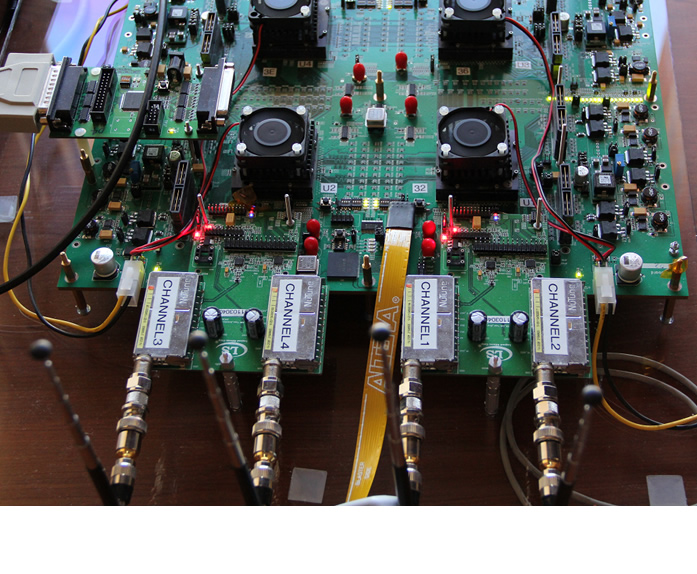ATSC at 55mph and more: Wi-Flow TV looks to shake up television
Cord-cutters and other television viewers who are rediscovering OTA TV reception — whether in combination with OTT video delivery or not — may one day soon have access to pristine ATSC reception whether they’re at home in their living rooms or barreling down the road at 55mph.
At least that’s the plan of Raj Karamchedu and Lin Yang, co-founders of Wi-Flow TV. The pair says they have developed a multi-antenna reception technology for ATSC digital television that defeats multipath reflections that would be expected in a moving vehicle and delivers between 3dB and 7dB of gain for each additional antenna introduced into the receive system.

Typically, for any wireless systems, there are at least three ways to take advantage of multiple receive antennas, including selection diversity where the best available antenna signal is chosen, averaging of available signals from the antennas in the system, and maximal ratio combining (MRC), which is mathematically optimal, says Karamchedu.
In the world of multicarrier transmission systems, such as DVB-T with COFDM modulation, or even Wi-Fi and MIMO (multiple input/multiple output) wireless technology, maximal ratio combining is well understood and used, he says. But for single-carrier systems, like ATSC’s 8VSB, leveraging MRC has not been possible — at least until Wi-Flow TV, explains Karamchedu.
For the past five years, Yang and Karamchedu have been at work on an MRC receive system for a single-carrier television transmission in China, and they claim to have found a winning solution. In the United States, they have put their system to the test in a vehicle they have driven around Silicon Valley, and have achieved reception of a standard — not mobile — ATSC signal while traveling at between 45mph and 55mph that Karamchedu says is every bit as good as the signal from a stationary rooftop antenna 30ft above the ground.
Yang developed an MRC algorithm that overcomes ATSC’s inherent design, which is optimized for fixed reception, and has demonstrated the benefits of MRC reception with legacy ATSC using four or more antennas. Karamchedu adds the system is focused on use of four antennas because that’s the sweet spot for price and performance.
Karamchedu is looking to productize Wi-Flow TV for both the automotive and the home TV markets. Luxury automobiles, he says, are no strangers to multiple antennas. Between radio, satellite radio and GPS, it is not unusual for some models to have up to 20 antennas. Karamchedu says he hopes adding four more to receive 720p and 1080i HDTV in a moving vehicle won’t be too much of a stretch for luxury brand car makers.
The professional video industry's #1 source for news, trends and product and tech information. Sign up below.
In the home, Karamchedu says Wi-Flow TV will take the form of a wireless antenna system made up of four Wi-Flow TV receivers that can be positioned in an attic or elsewhere and linked wirelessly via Wi-Fi to a Wi-Flow TV base station. The receivers, which downconvert RF to digital IF, transmit the digital data to the base station, which in turn runs the company’s MRC algorithm before handing off the signal to the HDTV set.
Although Wi-Flow TV is more than a science experiment, it is not yet a product. Karamchedu says before it can become commercially available, Wi-Flow TV needs capital. To that end, he has launched an effort to find funding to take development to the next level and ultimately to bring the product to market.
If he is successful, Wi-Flow TV may one day make it that much easier for those flirting with the idea of cutting the cord to actually do so and rely on OTA TV reception for network and local TV programming while turning to OTT delivery for their on-demand premium entertainment experience.
Editor’s note: Yang and Karamchedu initially developed this technology for use in China under the corporate structure of Legend Silicon. The pair has continued to develop the technology for the ATSC market under the company Wi-Flow TV.
